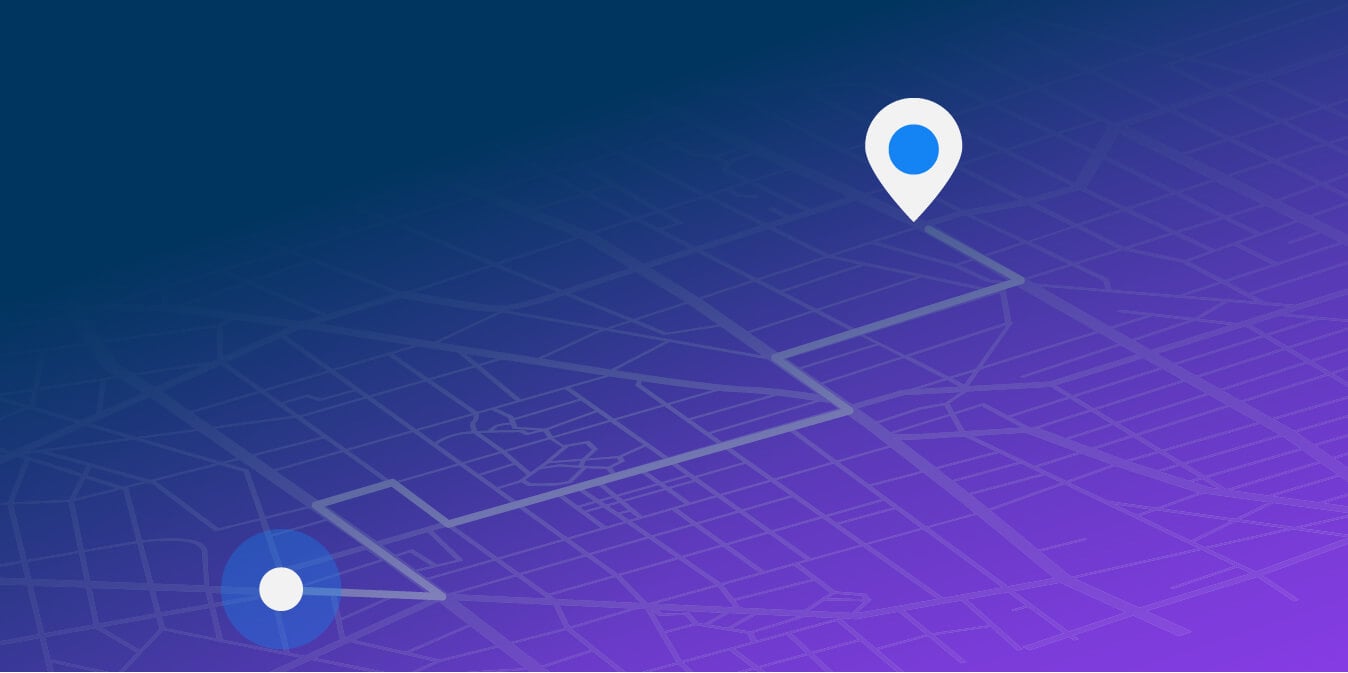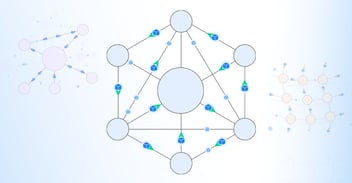Don't be overwhelmed by data mesh implementation. Keep reading to learn why a Data Product Platform is the direct route to decentralized data management.
Table of Contents
Data Mesh, Defined
Data Mesh Benefits
Data Mesh Challenges
Addressing Data Mesh Issues with Data Product Platform
K2View Data Product Platform – Mesh and More
Data Mesh, Defined
Theoretically, the idea of centralizing all of an enterprise’s data and creating a “single source of truth” seems like a good idea. But in practice, a centralized approach to managing data brings with it many challenges.
Data mesh, a modern data architecture and operating model, offers a federated approach for managing and analyzing data.
In a data mesh, each business domain has the autonomy to define, access, and control its own data products. Although data governance in a data mesh framework is distributed, it relies on global governance, security, and compliance mandates.
Enterprises that deploy a data mesh architecture stand to gain a wealth of benefits, such as reduced reliance on centralized data teams, increased business agility, and faster data delivery. However, data mesh introduces challenges too — especially if the organization is not adequately prepared to make the shift.
In this article, we’ll cover top data mesh benefits, and explain how a Data Product Platform positions organizations to overcome the most common challenges.
Data Mesh Benefits
A data mesh architecture lends organizations a wide range of benefits. Here are some of its key advantages:
-
Enhanced scalability and business agility
As a decentralized data architecture, data mesh enables domain autonomy and data infrastructure as a service. This allows teams to increase agility, reduce time-to-market, and pare down IT backlogs to reduce operating and storage costs. -
Simplified compliance
Although data governance in a data mesh framework is distributed, business domains still adhere to a global set of rules and standards related to privacy, access controls, quality, discoverability, and compliance. This ensures interoperability and standardization across data products and promotes data quality and access. -
Reduced reliance on overburdened data teams
Compared to traditional data architectures, in which a central data team is responsible for integrating, querying and provisioning data, data mesh democratizes data ownership by distributing it among cross-functional domain teams. A domain-oriented approach not only improves efficiency and data quality, but it also alleviates data teams of never-ending demand for data and insights. -
Increased flexibility
The distributed data mesh infrastructure helps businesses avoid getting locked in with one data platform. Instead, they become vendor-agnostic, with the flexibility to connect with many systems.
Data Mesh Challenges
At the same time, data mesh may introduce significant challenges. The main challenges stem from the complexities inherent to managing and governing multiple data products — and their dependencies — across multiple, autonomous business domains.
-
Major cultural and process shifts required
Adopting data mesh and decentralizing data operations requires a significant degree of change management. With ownership and responsibility for data being transferred to business domains, data engineers and data product managers, equipped with the necessary tools and knowhow, must be added to domain teams to take responsibility for building and operating data products. Restructuring teams, processes, and tools to support this change requires buy-in across the enterprise. -
Enforcement of federated data governance and quality assurance
With autonomously operated, decentralized data products, data quality and compliance principles can easily be neglected or compromised. The consequences can include lack of interoperability and standardization, noncompliance, and loss of data integrity.Therefore, it’s crucial to appropriately identify and federate these responsibilities. Maintaining a center of excellence is critical for supporting business domains, auditing data products, and enforcing global standards to ensure data integrity and uniformity.
-
Risk of data redundancy
Another key challenge of data mesh is the risk of data product duplication across different domains. As data is repurposed to serve different needs, business domains risk creating redundant, or inconsistent, data products. Not only does this undermine the reliability of the data, but it also drives up data management costs. -
Decentralization considerations
Adopting data mesh and decentralizing data operations is not suitable for everyone. For some companies, the benefits of decentralization do not make up for the costs of investing in a new data architecture and decentralized operating mode. Data mesh is ideal for organizations with multiple divisions, with distributed data engineering and analysis expertise, and a mature data management practice.
Addressing Data Mesh Challenges with Data Product Platform
The unique features of Data Product Platform address the following data mesh challenges:
|
Issue |
Feature |
|
Data access and security |
Seamless connection with multiple data sources, and use of inflight data masking tools, for secure delivery to authorized data consumers only |
|
Data governance and compliance |
Built-in data ingestion methods and adherence to central compliance and governance policies (via data governance tools) |
|
Data preparation and delivery |
Embedded data pipeline, supporting both operational and analytical workloads |
Data Product Platform – Mesh and More
Data Product Platform empowers organizations to reap the benefits of a decentralized data mesh without the implementation and technology challenges.
Deployable as data mesh architecture, data fabric architecture, or data hub architecture – in the cloud, on-prem, or in hybrid environments – the platform allows business domains to truly democratize operational data access across the enterprise, increase business agility, and drive data-backed innovation.
Data Product Platform creates, delivers, and manages data products in real-time at unprecedented scale. It’s designed to address an enterprise’s most important analytical and operational workloads, including customer 360, data masking, data tokenization, test data management, data migration, and legacy modernization.
The secret sauce of the Data Product Platform is patented Micro-Database™ technology, which allows data products to deliver a trusted, complete, real-time view of any business entity, such as a customer, supplier, device, or order.
A data product integrates an individual entity’s data from all related source systems into its own secure Micro-Database, one for each individual entity. This ensures entity-centric data integrity and standardization of global governance principles, while speeding and scaling up access to operational data.







.png)






